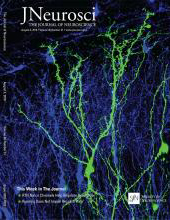- EN - English
- CN - 中文
Olfactory Avoidance Test (Mouse)
嗅觉回避试验(小鼠)
发布: 2017年03月05日第7卷第5期 DOI: 10.21769/BioProtoc.2153 浏览次数: 8928
评审: Soyun KimAnonymous reviewer(s)
Abstract
In mice, olfaction plays a pivotal role for the various behaviors, such as feeding, mating, nursing and avoidance. Behavioral tests that analyze abilities of odor detection and recognition using genetically modified mice reveal the contribution of target genes to the olfactory processing. Here, we describe the olfactory avoidance test to investigate the odor detection ability in mice.
Keywords: Olfaction (嗅觉)Background
Olfactory system is a good model for studying the sensory processing in the brain. To characterize innate fear responses such as freezing and avoidance in genetically modified mice, the olfactory avoidance test was performed using a component of fox feces, TMT (2,5-dihydro-2,4,5-trimethylthiazoline; Kobayakawa et al., 2007). Furthermore, the olfactory avoidance using the different amounts of TMT was carried out to know the odor detection threshold in gene-knockout mice (Kaneko-Goto et al., 2013). Recently, we have reported that non-dihydrogenated TMT (nTMT: 2,4,5-trimethylthiazole) also induces similar freezing and avoidance responses (Takahashi et al., 2016). Here, we describe a method for the olfactory avoidance test with nTMT (commercially available) to explore the odor detection threshold in mice. This method has an advantage in the point using a simple device such as cage and filter paper, compare with that using an olfactometer.
Materials and Reagents
- Latex gloves (NIPPON Genetics, catalog number: SLPF-M )
- Filter paper (3 MM CHR) (GE Healthcare, catalog number: 3030-909 )
- Paper towels (KCWW, Kimberly-Clark, catalog number: 47000 )
- Laboratory-bred mice
Note: For the test, male mice should be used to avoid the effect of the estrous cycle. Mice are housed in groups 3-5 per cage, kept in a room with controlled temperature (~23 °C) and humidity under 12 h light/dark cycle (lights on at 8:30 AM) with ad libitum access to food and water. - 2,4,5-trimethylthiazole (nTMT) (7.9 M) (Tokyo Chemical Industry, catalog number: T1068 )
Note: A component of fox feces, TMT (2,5-dihydro-2,4,5-trimethylthiazoline), is known to evoke innate fear responses in rodents (Kobayakawa et al., 2007; Kaneko-Goto et al., 2013). Non-dihydrogenated TMT (nTMT) also induces similar freezing and avoidance responses (Takahashi et al., 2016). - 70% ethanol
Equipment
- Test cage (31 x 21 x 12.5 cm) (one cage per one mouse)
- Habituation cage with the same size as the test cage (four cages per one mouse)
- Clear acrylic board (which can cover the roof of the test cage)
- Video camera (Sony, catalog number: HDR-CX560V )
Note: The mouse behavior is recorded under the weak-light condition. This model (Sony Nightshot Camcorder) is equipped with infrared-mode. - Tripod for camera (SLIK, catalog number: F 740 )
- Red light
- Fume hood
Software
- Microsoft Excel (Microsoft)
Procedure
文章信息
版权信息
© 2017 The Authors; exclusive licensee Bio-protocol LLC.
如何引用
Readers should cite both the Bio-protocol article and the original research article where this protocol was used:
- Takahashi, H. and Tsuboi, A. (2017). Olfactory Avoidance Test (Mouse). Bio-protocol 7(5): e2153. DOI: 10.21769/BioProtoc.2153.
-
Takahashi, H., Ogawa, Y., Yoshihara, S., Asahina, R., Kinoshita, M., Kitano, T., Kitsuki, M., Tatsumi, K., Okuda, M., Tatsumi, K., Wanaka, A., Hirai, H., Stern, P. L. and Tsuboi, A. (2016). A subtype of olfactory bulb interneurons is required for odor detection and discrimination behaviors. J Neurosci 36(31): 8210-8227.
分类
神经科学 > 行为神经科学 > 认知
您对这篇实验方法有问题吗?
在此处发布您的问题,我们将邀请本文作者来回答。同时,我们会将您的问题发布到Bio-protocol Exchange,以便寻求社区成员的帮助。
提问指南
+ 问题描述
写下详细的问题描述,包括所有有助于他人回答您问题的信息(例如实验过程、条件和相关图像等)。
Share
Bluesky
X
Copy link












